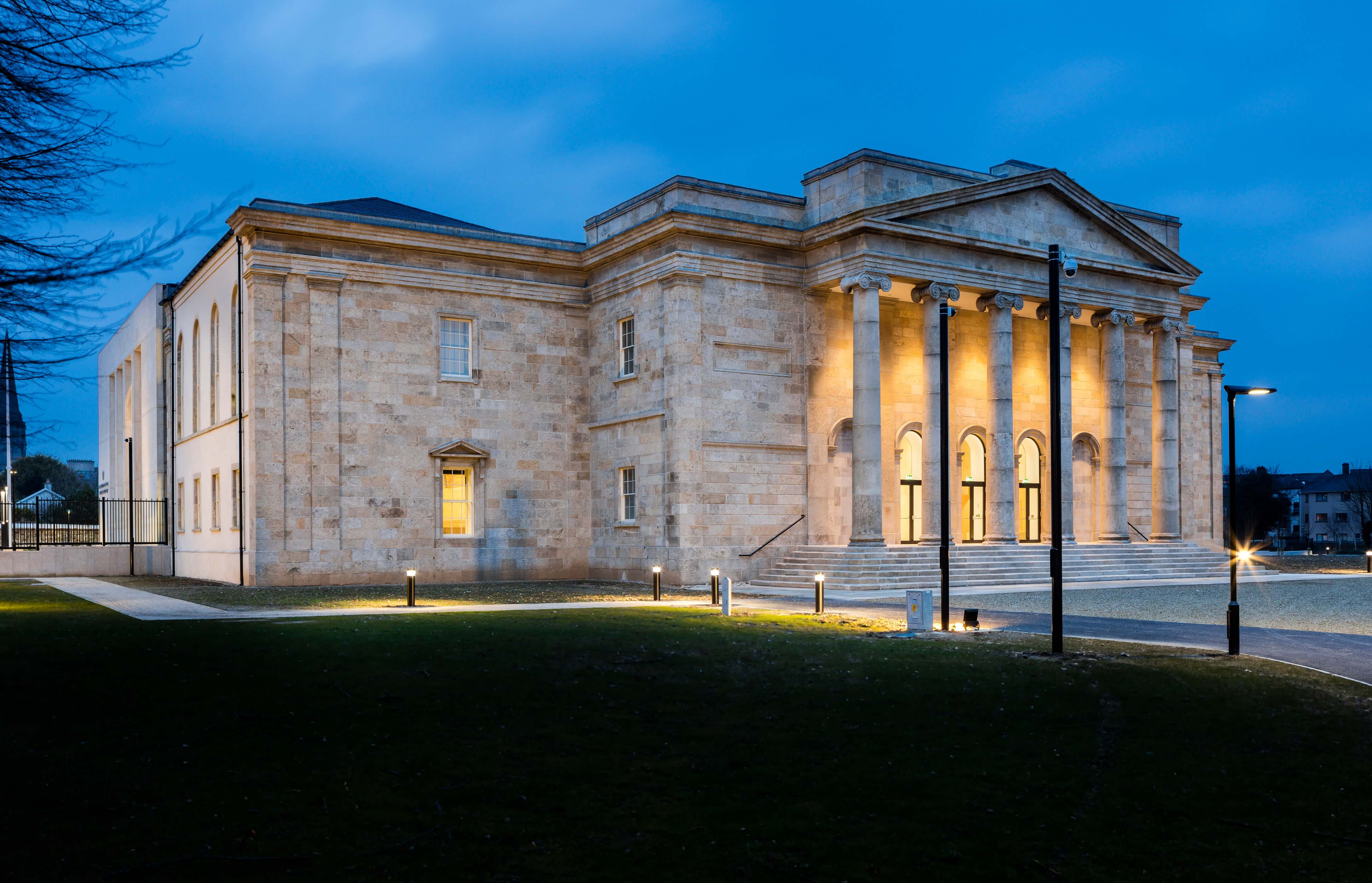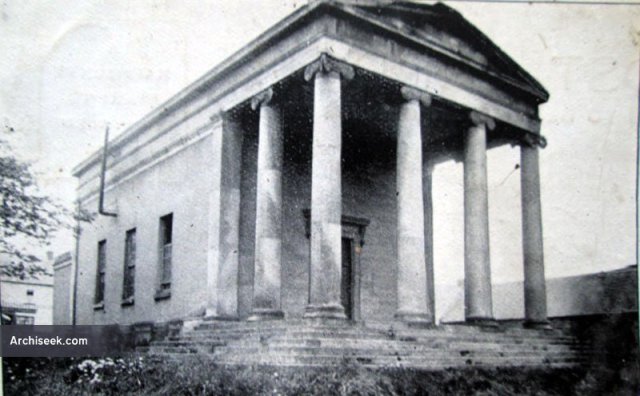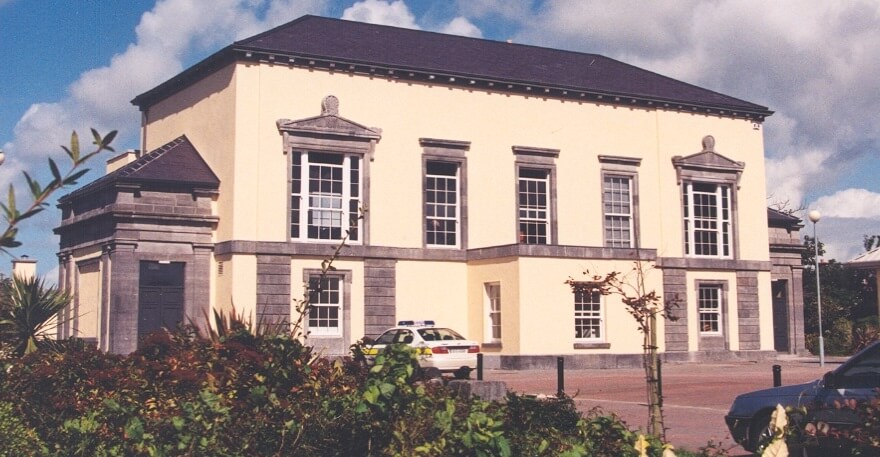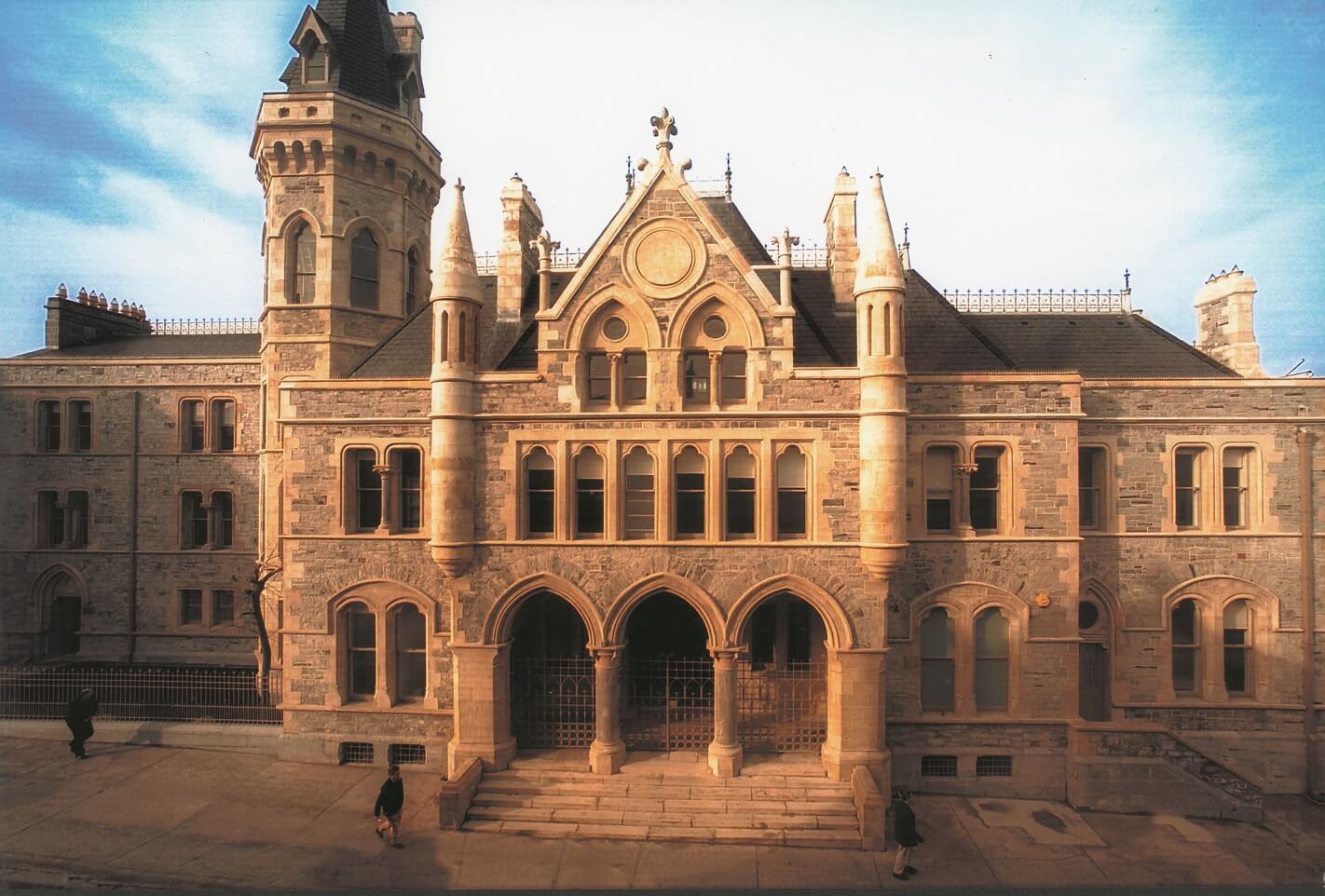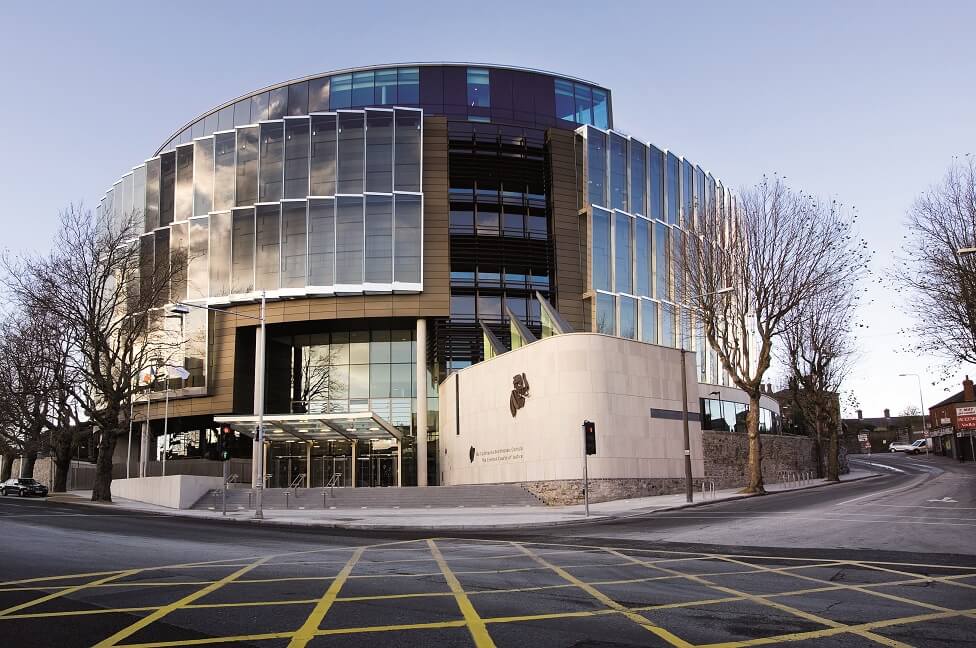The earliest courts in Ireland were probably clearings in the wood, undefined gathering places used for judgment and festivity. The Brehon Laws used in pre-Norman times may have been exercised in raths or ringforts, maintaining a very ancient tradition of assemblies.
The arrival of the feudal system in the Middle Ages brought Ireland into approximate line with the rest of Europe. It also brought an abundance of courts; ecclesiastical, royal and civic, as legal power was divided between interest groups.
The Great Hall in Dublin Castle was used for courts, and it’s possible similar use was made of the large halls in Askeaton Castle, Co. Limerick, or Trim Castle, Co. Meath, where a change in the layout of the furniture was enough to prepare a courtroom for use. Dublin's Liberties had their own courts. Towns dispensed local justice from tholsels (toll halls) and town halls.


